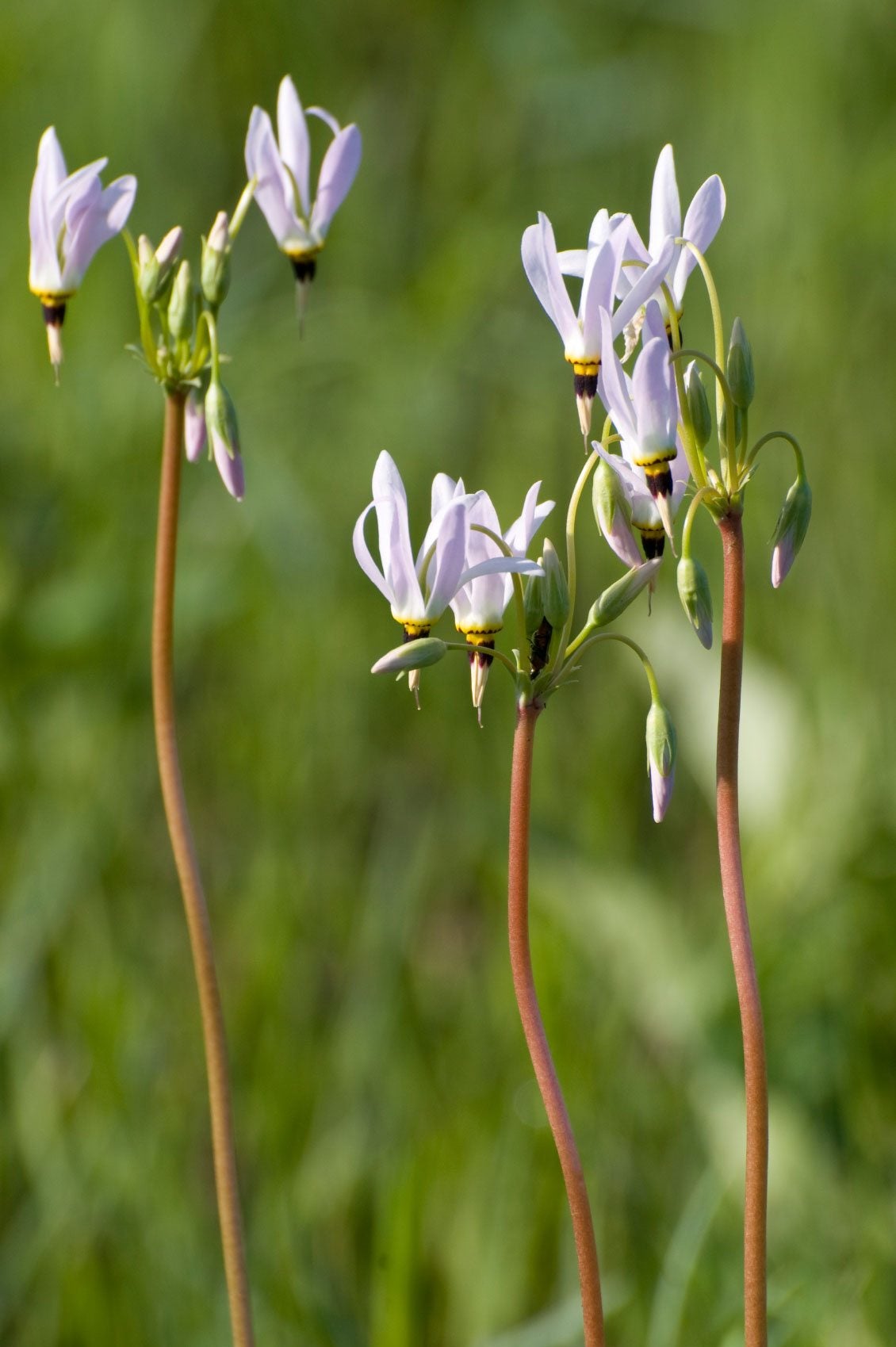Shooting Star Care - Information On Shooting Star Plants


The common shooting star plant is native to North American valleys and mountains. The plant may be found growing wild in low elevation areas in spring or in summer where consistent moisture is available. Growing shooting star wildflowers in the native home garden is easy and produces masses of the attractive blooms having yellow or lavender collars.
Information on Shooting Star Plants
Common shooting star blooms in mid-spring from May to June. The plant forms rosettes of long narrow leaves and singular slender stems. The flowers hang in umbels from the stems and are white to bright pink. The petals grow backward and up, away from the reproductive organs of the plant. These dangle down from the center and may be a pale yellow, pink, or even soft purple color. Flower color combinations are blue-purple, yellow-orange, or pink-red. The common shooting star (Dodecatheon meadia) is a member of the Primrose family and is a natural part of the prairie garden. These wildflowers are found in wetlands to semi-arid prairies. They are also found growing among woodland plants, especially in oak forests.
Growing Shooting Star Wildflower
The common shooting star plant produces small, hard green capsules after flowering. These fruits contain the seeds of the wildflower, which require pollination by bees to set. The mature fruit will remain on the plant until fall. The fruit pods are oval and dry out to split open with a ridge of teeth-like serrations on the woody pod. You can harvest the pods and sow the seeds. However, some important information on shooting star plants is that the seeds require stratification, which you can mimic by putting the seed in the refrigerator for 90 days. Then plant the seeds outside in spring in a prepared bed located in sun to partial shade. Seeds germinate readily in moist soils.
Using Common Shooting Star Plant in the Garden
Use this wildflower in the native garden, near a water feature, or other moist area. Common shooting star only blooms for a short period in late May to very early June but has an unusual looking flower that is a harbinger of the growing season. This herbaceous perennial plant will grow 2 to 16 inches (5-41 cm.) tall and adds interesting foliage, texture, and fabulous blooms for the natural garden.
Shooting Star Care
Shooting star plants are short-lived perennials, which do not produce flowers the first year. Shooting star care is minimal once they have established, but the plant will produce the best flower display if the stems are cut back in spring. The best flowers are produced in the third year and thereafter flowering diminishes. Common shooting star plants need protection from deer and elk, who dine on the early shoots in spring. Some types of caterpillars and other insect larvae will feed on the plant. Keep old plant debris out of the garden where these pests hide and place a thick mulch of bark around the base of established plants to prevent damage.
Sign up for the Gardening Know How newsletter today and receive a free copy of our e-book "How to Grow Delicious Tomatoes".

Bonnie Grant is a professional landscaper with a Certification in Urban Gardening. She has been gardening and writing for 15 years. A former professional chef, she has a passion for edible landscaping.